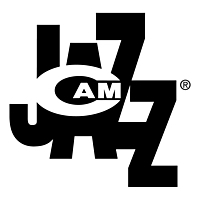Andrea Dionisi, the renowned Italian jazz fusion musician, is preparing to embark on an exciting new chapter in his career with upcoming artistic residencies at two of Boston's most prestigious music venues. Famed for his innovative prowess as a music director, arranger, and drummer, Dionisi's path in music has been paved with artistic excellence. His journey, as chronicled here by Lukas Wieland, includes honors from elite institutions such as the Conservatory F.A Bonporti in Trento, the Nam Bovisa School of Music in Milan, and the illustrious Berklee College of Music in Boston, where he studied on the coveted Alan Dawson merit scholarship.
A former leading drumming professor at the illustrious Music School Celestino Eccher, Dionisi has had his musical genius acknowledged with some of Italy’s most prestigious national awards. Twice honored with the “Premio Nazionale delle Arti," his work has also garnered the 2023 Music 4 the Next Generation Award, celebrating his rare and outstanding ability to breathe new life into classical compositions through jazz. With such significant accolades under his belt, Andrea Dionisi is now set to bring his visionary sound to life, redefining the musical landscapes of two landmark American music venues—The Beehive and The Burren—through transformative artistic residencies.
By incorporating Latin Afro-Cuban rhythms and traditional Venezuelan beats, Dionisi aims to create a soundscape that is expected to become synonymous with The Beehive, a hallmark that listeners can immediately recognize. This innovative residency promises to elevate The Beehive's allure, drawing in young cosmopolitan audiences and paving the way for the venue to become a creative hub known for setting trends in the global music scene.
With these residencies The Burren, known for hosting legends such as The Chieftains and Bono, is taking a bold leap into the realm of fusion music. This adventurous shift is designed to engage international patrons seeking fresh, innovative musical experiences. Dionisi’s visionary approach will intertwine traditional Irish melodies with jazz improvisation and European folkloric elements, creating a unique sonic tapestry that will for sure captivate a wide range of listeners, from young enthusiasts to world music aficionados.
A former leading drumming professor at the illustrious Music School Celestino Eccher, Dionisi has had his musical genius acknowledged with some of Italy’s most prestigious national awards. Twice honored with the “Premio Nazionale delle Arti," his work has also garnered the 2023 Music 4 the Next Generation Award, celebrating his rare and outstanding ability to breathe new life into classical compositions through jazz. With such significant accolades under his belt, Andrea Dionisi is now set to bring his visionary sound to life, redefining the musical landscapes of two landmark American music venues—The Beehive and The Burren—through transformative artistic residencies.
Reimagining Sound: The Beehive Residency
Acclaimed as one of Downbeat Magazine's “Top 100 Jazz Clubs in the World," The Beehive is a famous music venue located in the historic Boston Center for the Arts in the South End. With the praise from The New York Times and Zagat, The Beehive is preparing to embark on an exhilarating new musical journey, and it is Andrea Dionisi who is set to play a vital role in this journey. As the Lead Arranger and Lead Drummer for The Beehive three-year residency of the Latin GRAMMY award-winning harpist and composer Eduardo Betancourt, Dionisi is poised to reshape the venue's musical identity.By incorporating Latin Afro-Cuban rhythms and traditional Venezuelan beats, Dionisi aims to create a soundscape that is expected to become synonymous with The Beehive, a hallmark that listeners can immediately recognize. This innovative residency promises to elevate The Beehive's allure, drawing in young cosmopolitan audiences and paving the way for the venue to become a creative hub known for setting trends in the global music scene.
Blending Traditions: The Burren's New Melodic Adventure
His other residency, at The Burren, a storied Irish music venue and cultural landmark in Boston, is also poised to explore uncharted musical territory, but of a different kind. Entrusted with crafting a new chapter in the venue’s journey, Dionisi will introduce a soundscape that will extend beyond traditional Irish music. As Music Director and Lead Arranger, he is at the helm of vibrant residencies featuring Ciara Moser, the internationally acclaimed Austrian jazz bassist, and Henry Fisher, an American composer famed for his groundbreaking jazz/world collaborations.With these residencies The Burren, known for hosting legends such as The Chieftains and Bono, is taking a bold leap into the realm of fusion music. This adventurous shift is designed to engage international patrons seeking fresh, innovative musical experiences. Dionisi’s visionary approach will intertwine traditional Irish melodies with jazz improvisation and European folkloric elements, creating a unique sonic tapestry that will for sure captivate a wide range of listeners, from young enthusiasts to world music aficionados.
A Vision for the Future: Pivotal Artistic Residencies
Through these pioneering artistic residencies, the Italian fusion master will breathe new life into two of Boston’s most esteemed music venues, ensuring their continuous allure in an increasingly interconnected world. At The Beehive, his inventive setlists will become the venue's signature voice, creating an aural identity that captivates and attracts music lovers globally. Similarly, at The Burren, the fusion of Irish tradition with contemporary jazz will rejuvenate the venue's appeal, drawing in new audiences eager to embrace a modern musical canvas. Andrea Dionisi’s upcoming artistic residencies are not just plans on paper—they are a testament to his ability to craft resonant, enduring musical experiences that transcend borders and appeal to listeners' hearts and minds worldwide. Through his visionary direction, The Beehive and The Burren stand poised to redefine Boston’s musical landscape for years to come.For more information contact All About Jazz.































